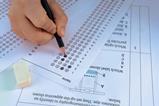Encourage students to think about their thinking to improve metacognition and successfully answer multistep questions
There’s a direct link between a student’s ability to think through a process and their attainment. In fact, an EEF report suggests metacognitive teaching and learning could add seven months of learning progress. And an important area of metacognitive teaching strategies we can harness easily in the science classroom is questioning.

There’s a direct link between a student’s ability to think through a process and their attainment. In fact, an EEF report (bit.ly/3VSvLhC) suggests metacognitive teaching and learning could add seven months of learning progress. And an important area of metacognitive teaching strategies we can harness easily in the science classroom is questioning.
The average teacher asks more than 150 questions per day, most requiring answers less than three words. To me, these short responses are a wasted opportunity as they don’t fully harness the power of questioning. So, I’ve broadened my questions to include those which really make learners think.
Metacognitive questioning guides learners to think about how they are thinking and why they are approaching tasks in a particular way. I model this with my 14–16 year-old learners using a titration calculation; for post-16 students a back or redox titration is useful. Students can find these multistep calculations challenging. By scaffolding their thinking at each stage, we can help them understand why they’re doing each step. I frame the task around the key parts of the metacognitive process, displaying questions before, during and after the task.
Before the task
As teachers, we have seen a vast array of exam questions. Digging out key information and working out a strategy is second nature for us, but not for our students who may never have faced these unfamiliar questions or not had lots of practice, yet. The before stage builds understanding of how to interpret questions. First, I hand out the exam question for students to read. Before they tackle this question, I get them to discuss these three key question in pairs.
How is this similar or different to ..? This taps into prior knowledge, highlighting the important links to topics we’ve already covered. For example, I might ask, ‘How is this similar and different to concentration calculations?’ to enable students to recognise that the calculation is a multistep process.
What am I trying to achieve? It is very easy for the demands of the task to get lost in the complexity of the information given. This question directs learners to think about the end goal. I encourage my students to mark with a highlighter what they are trying to achieve.
What must I do first? Students often find it tricky to know how to begin. It helps if I model the task. Gradually removing this scaffolding builds more self-regulated learners who can readily process key information from the question.
During the task
Especially during multistep processes, it’s easy to lose track as working out builds up on the page. Stimulating thinking about how to work through the problem is the next important metacognitive step.
Am I on the right track? After every calculation step, I encourage my students to focus on the end goal to help them think about the next step to get there.
What could I do differently? If a student gets lost, I guide their thinking by asking them what they could do differently. I encourage a mole sandwich approach to calculations, working towards a moles filling as a middle step, which is usually a helpful prompt!
Which part do I need help with? All students need help from time to time. When students announce they are stuck, I always follow up with, ‘Show me which parts you understand and where you got stuck.’ Encouraging students to identify the specific part of the process they need support with strengthens their self-regulation.
After the task
Encouraging students to evaluate their work is key to the metacognitive process. This often works well following teacher feedback, but I also encourage students to evaluate routinely after completing unfamiliar tasks.
What different ways are there of looking at this? No two students’ calculations are identical, and they often work through problems in a different order than we might expect. After showing students the mark scheme, I ask the class, ‘Who did this in a different way?’ Encouraging learners to recognise and explore different ways of thinking about a problem enables them to understand how there can be many different routes to the same end goal.
Could I apply this to other situations? After celebrating the successes of tackling one problem, I ask my class how we might solve a future problem using the same approach. This is a great way to give them food for thought for the next lesson, when we can begin the metacognitive approach again.
Using this framework for questioning in your lessons helps to establish regular metacognitive dialogue, enabling learners to become more self-regulated and deeper thinkers about the problems they encounter.
Want more on metacognition?
- Read the 7 simple rules for science teaching article on thinking about thinking.
- Encourage metacognition for effective life-long learning with this evidence-based research and teaching tips.
- Show students how to direct their own learning with the metacognitive cycle of plan, monitor and evaluate, and download the exam wrapper template.
- Use this article to motivate students to put more effort into their learning, increase their self-efficacy and achieve better outcomes.
Louise Glynn














No comments yet